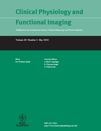Computational and physiological background of the baroreflex sensitivity
Summary
All the commonly used definitions of baroreflex sensitivity (BRS) are based on a slope of linear relationship between systolic blood pressure and pulse interval (R–R interval). However, heart rate (HR) and R–R interval bear an inverse non-linear relationship, which distorts determination of BRS when different HR levels are present. We analysed data of 117 healthy, normal-weight, non-smoking men and women aged 23–77 to show how BRS depends on the initial HR. In this data, 43% of variation in BRS is solely explained by HR. Comparisons of BRS between patients with different HR and even within the same patient with changing HR (e.g. tilt-table test and nocturnal changes in HR) should be questioned. Consideration of the baseline HR is even more crucial, if the patients are subjected to an intervention affecting not only baroreflexes but also HR. If baseline HR is not taken into account, using the R–R interval in the estimation of BRS may lead to partially misleading values and possibly also to misinterpretation of physiological processes. We discuss alternative definitions of BRS to allow varying HRs.




